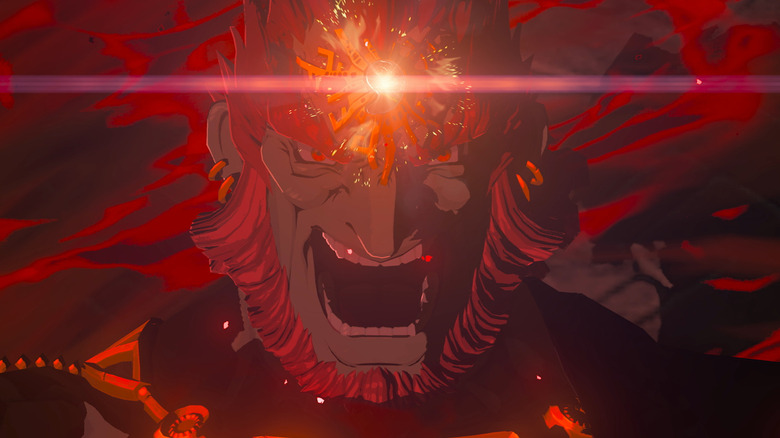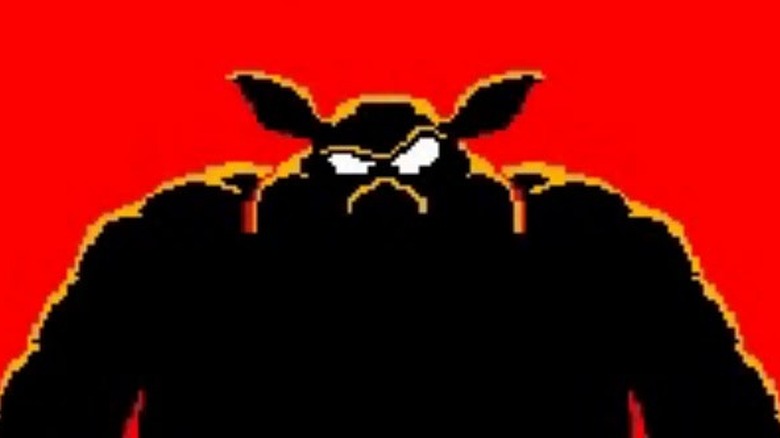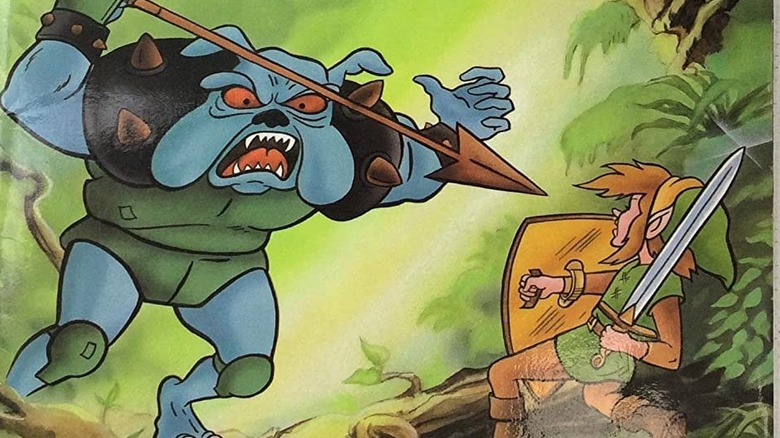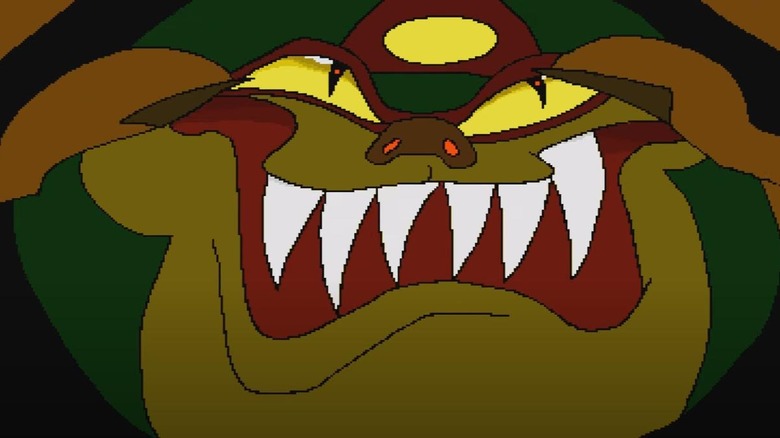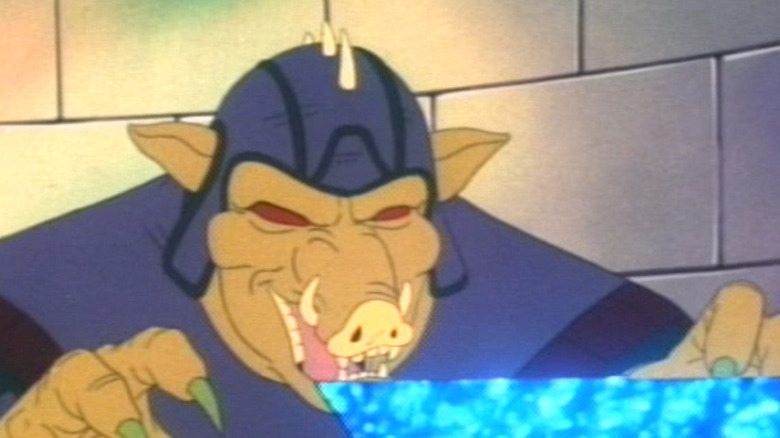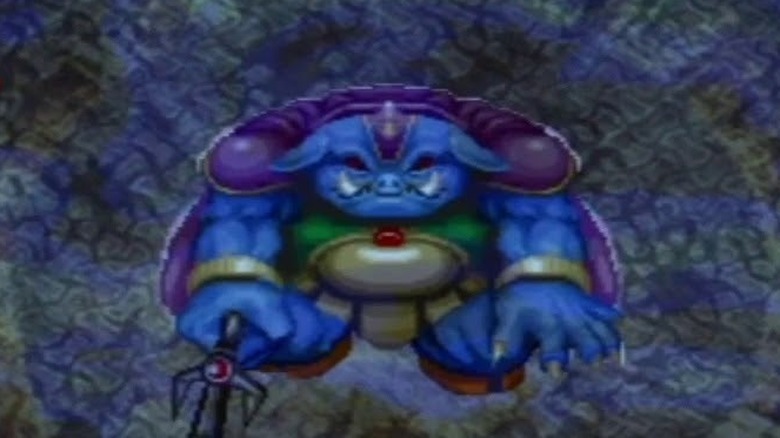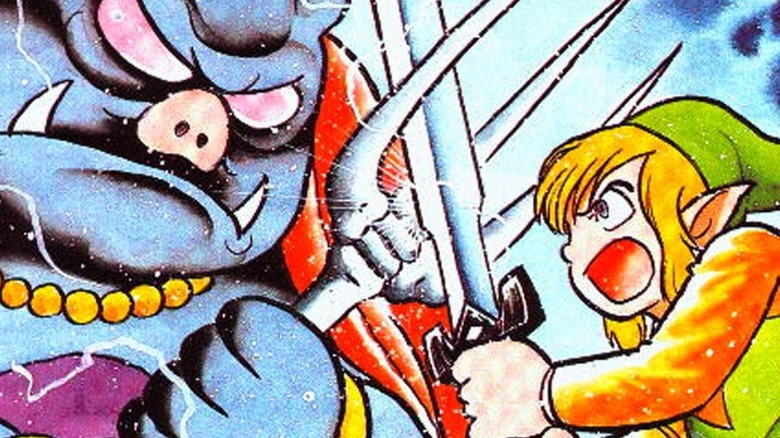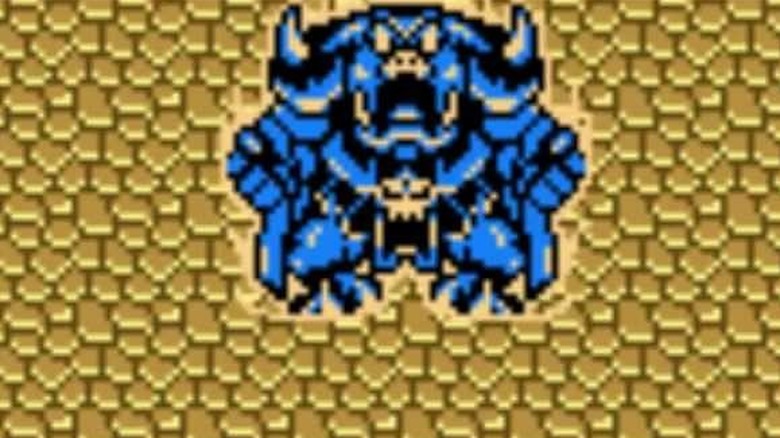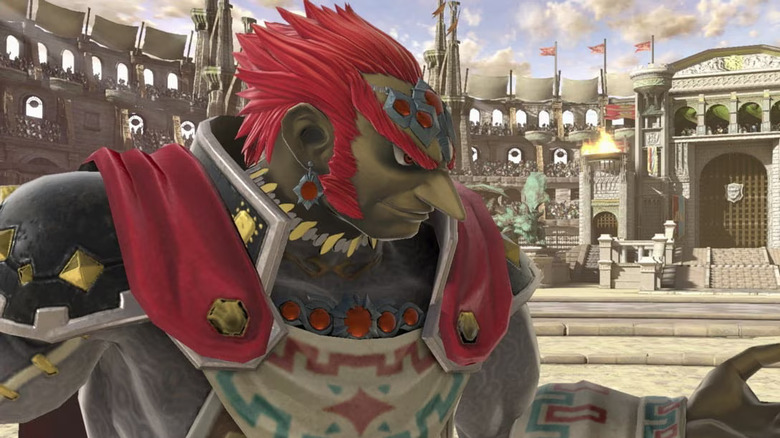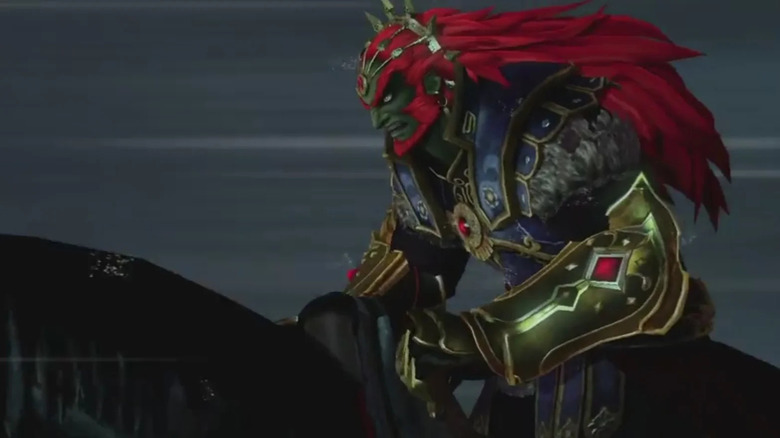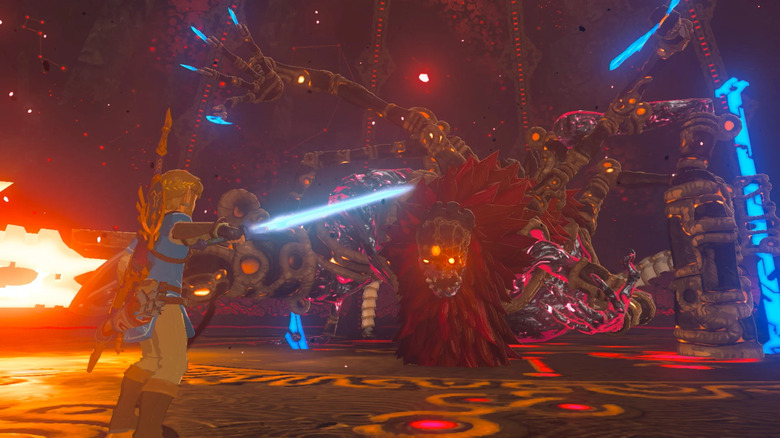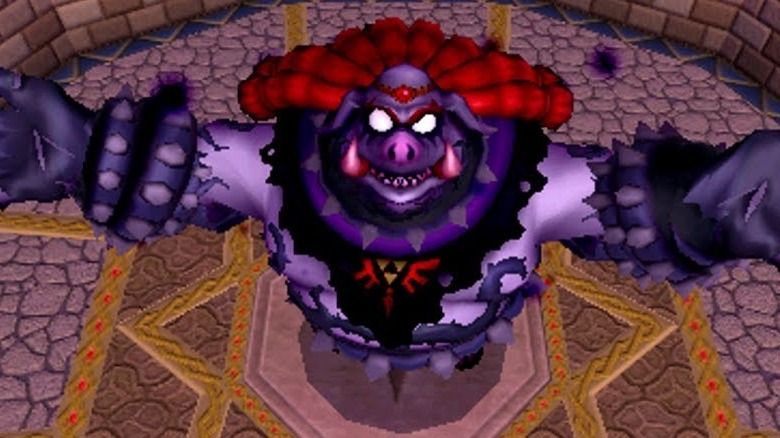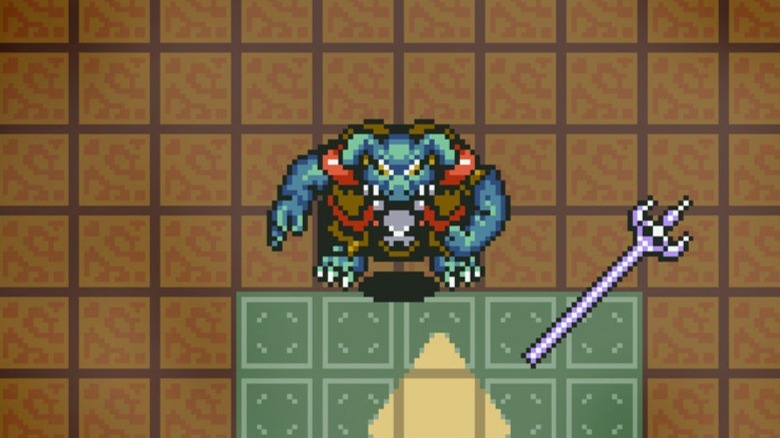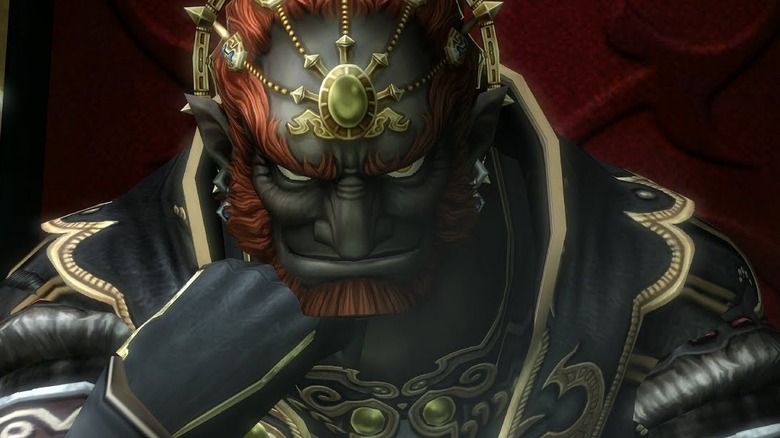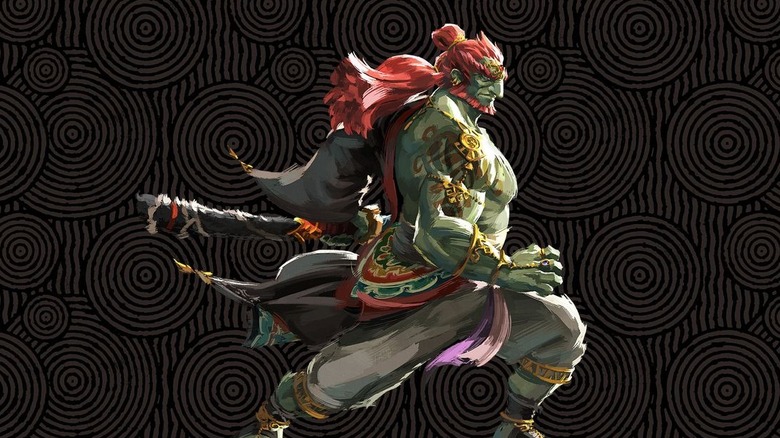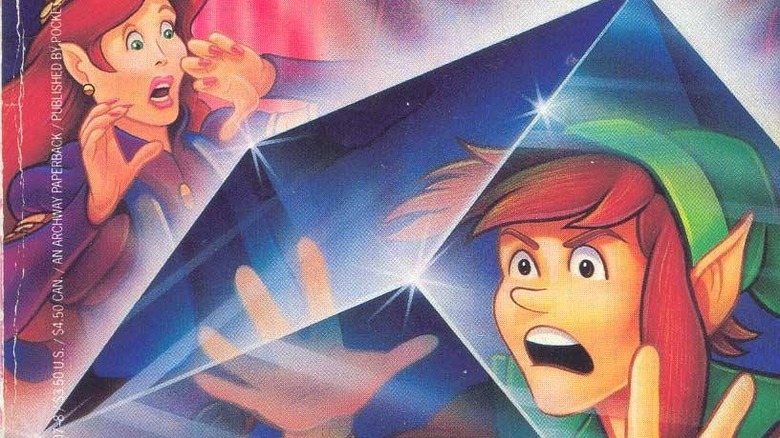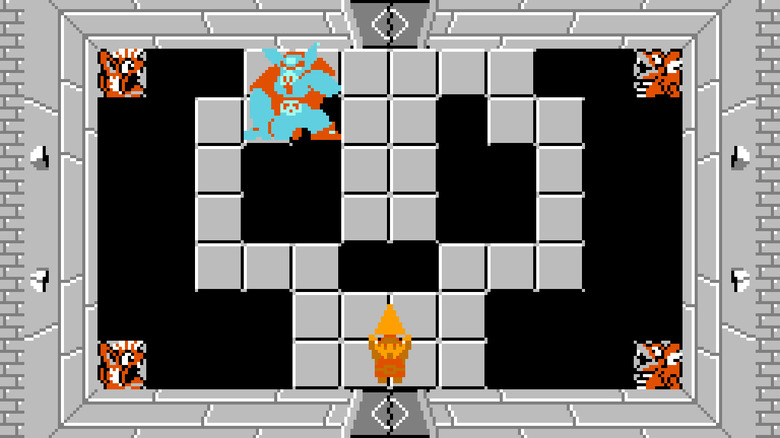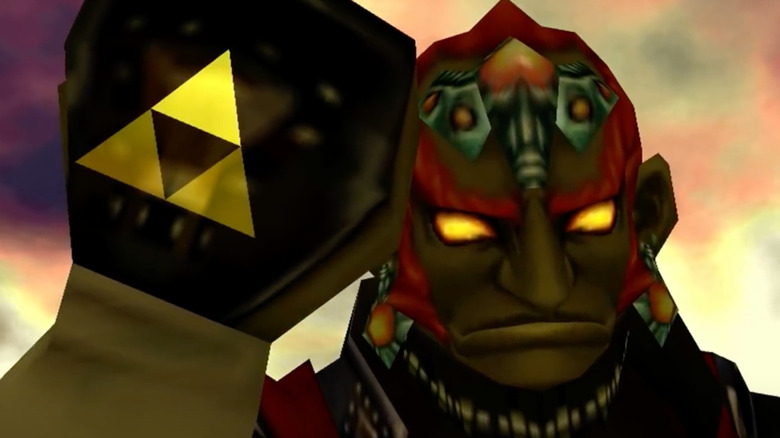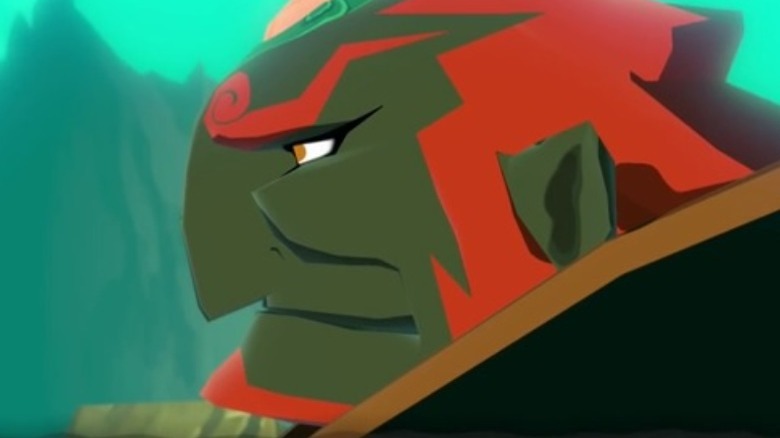Every Version Of Ganon & Ganondorf Ranked
"The Legend of Zelda" is one of the most iconic franchises throughout the video game industry. The success of Nintendo's premiere RPG franchise has led to its cast of characters also becoming classics in their own right, with the likes of Link, Ganondorf, and Zelda being very widely known. However, each character has been presented in a variety of different tones, styles, and contexts throughout the sprawling franchise that covers video games, comic books, a cartoon, and even choose-your-own-adventure novels. So, with all those different versions what renditions of the series' imposing antagonist Ganondorf rise to the top?
Before getting into the rankings of every version of the villain, it is important to cover the differences between Ganondorf and Ganon. The relationship between the two is a bit complicated, but to put it simply, they are two versions of the same being that were created when Zelda and Link were cursed by the demon Demise at the end of "Skyward Sword." Ganondorf is the primary version of the villain, but he is able to transform into the boar-inspired beast known as Ganon in certain titles.
There are multiple timelines at play in the canonical story of "The Legend of Zelda," which also makes things a bit more complicated. In some timelines, Ganondorf never turns into Ganon, while in others Ganon is present with Ganondorf never making an appearance.
18. Zelda 2: The Adventure of Link
Perhaps the least impressive version of Ganon throughout the franchise is in "Zelda 2: The Adventure of Link." As the direct sequel to the first "Legend of Zelda" game, Ganon is still dead after Link first defeated him. Throughout the game players have to fight to counteract attempts to resurrect him, with him rising to conquer the world whenever they lose. There is a sinister element of this rendition of Ganon because the game over screen means that Link's blood was taken to complete the ritual to resurrect the monster.
However, Ganon never appears in the game outside of the game over screen, making it his weakest appearance throughout the franchise. His silhouette has some fun character to it, but it is generally easy to forget that Ganon appeared in the game at all, so it is difficult to put this appearance anywhere other than at the bottom of the pile.
17. Molblin's Magic Spear
"The Legend of Zelda: Molblin's Magic Spear" is a children's book released by Nintendo that depicts a small story set during the original video game. The book is a fun piece of history for the franchise, but does have some interesting inconsistencies with the series' future, such as Moblins being called Molblins throughout it. Since the book is set during the first game, however, it does feature Ganon throughout — although it is in a very limited capacity because Link can't face or defeat him during the book because it happens in the game.
So, Ganon's entire role in the book is staying in hiding and spying on Link during his adventure through a crystal orb. Ganon does so little in the book that omitting him entirely would not have had much of an impact on the book's story. Despite this, he is there, and he ranks just slightly better than his appearance in "Zelda 2" since he does slightly more than just stand there.
16. CD-I Games
The "Legend of Zelda" spin-offs developed for the short-lived CD-i system are a very strange mark in the franchise's history. There were three games released in total that vastly changed the gameplay style of the series to a more action-adventure formula with side-scrolling platforming sections and cartoon cutscenes. They hold a special place in the transformation of "The Legend of Zelda," and hold a special place in the hearts of franchise fans because of how strange and different they are.
Ganon also appears throughout the CD-i trilogy and acts as the antagonist of all three titles. However, it is hard to take him seriously in the games because of how silly and over-the-top the trilogy's cutscenes are, especially now. This version of Ganon ends up playing more like a joke than the terrifying and powerful villain that he is elsewhere. There is a lot of fun and entertainment to be found in the game's strange animations, but they do little to help Ganon stand up to his other appearances.
15. The Animated Series
Another less conventional rendition of Ganon came from the single season of the "Legend of Zelda" animated series. Over the course of the show's 13 episodes, viewers watch as Link and Zelda team up to counteract Ganon's newest plots each week. There was a lot to enjoy about the cartoon and its unique take on the "Legend of Zelda" franchise, but some of its changes to Ganon and his role in the story severely hampered his impact and presence in the cartoon.
One of the biggest aspects of the show that hampered Ganon's character was the need for him to lose at the end of each episode. Every episode had Ganon concoct a new scheme only for Zelda and Link to foil him yet again, which really gets in the way of him feeling like he was actually capable of beating them. The show also made an effort to pull back on the franchise's violence, so all enemies defeated by Zelda and Link are not killed but instead teleported into a jar kept by Ganon when they are defeated. This is fine for a children's show that doesn't want to go too far, but it does remove a lot of the imposing darkness of Ganon that fans identify with in the video games.
14. Four Swords Adventures
Throughout this spin-off Link faces off against the antagonist Vaati instead of Ganon. Ganon appears in the background here and there, but he doesn't do much of anything until after the player faces and defeats Vaati near the end of the game. Then, Ganon enters the scene to ambush Link and try to catch him off guard, subjecting the player to one last boss fight to save the world.
Using Ganon in this way largely makes his inclusion in the game at all feel like an afterthought. His lack of agency throughout the rest of the game strips him of any impact or presence throughout the game's narrative and makes the player's only interaction with him be kicking his butt once again. There is a lot that "Four Swords Adventures" could have done with Ganon if the developers had included him more during the playthrough, but as it stands it likely would have been better to leave him out of it altogether.
13. The Legend of Zelda Comics
"The Legend of Zelda" has also been translated to two comic book series, one following the plot of the animated series while the other provides a slightly altered take on the story explored in "A Link to the Past." The first series suffers from many of the same issues that plague the franchise's cartoon when it comes to Ganon. It struggles to make him come off as a formidable antagonist, although its more serious visual design helps elevate him slightly.
Unfortunately, the comic series based on "A Link to the Past" also struggles to show an exciting rendition of Ganon despite being based on a strong representation of him in the video game of the same name. To make the comics a worthwhile read for players of the game, it introduces new characters and moments to try and preserve the story's drama, but these new elements end up detracting from Ganon's role in the story.
12. Oracle of Ages/Seasons
The "Oracle of Ages/Seasons" titles were a very interesting experiment with how stories in "The Legend of Zelda" universe can be told. The two titles were separate games that interacted with one another and both told one half of the same story while each featuring their own gameplay focus. While those elements of the two games are very interesting, their combined story and depiction of Ganon unfortunately are not.
The titles revolve around two witches/surrogate parents to Ganon named Koume and Kotake, who have aims to resurrect Ganon. To do so, they kidnap Princess Zelda and plan on sacrificing her as part of a blood ritual. Link isn't so keen on letting that happen, however, and ultimately rescues Zelda just in time to stop the ritual. However, Koume and Kotake still complete the ritual by sacrificing themselves in lieu of Zelda, allowing Ganon to again serve as the final boss encounter.
The nature of the ritual ends up making this version of Ganon particularly bestial. Gone is his cunning and sinister air as they are replaced with blind fury and rampaging. This strips away a lot of Ganon's personality that has made fans find him so enjoyable, making it largely overshadowed by all of the more interesting aspects of the two games.
11. Super Smash Bros
Since Ganondorf is a top-tier Nintendo villain, it is no wonder that he has been featured in most entries in the company's all-star platform fighter series "Super Smash Bros." Unfortunately, however, his inclusion in them has been largely underwhelming. He was first introduced to the roster in "Super Smash Bros. Melee," where he appeared as an echo fighter of Captain Falcon. He had to be unlocked by players and featured a move set that was nearly identical to Captain Falcon's, although tweaked to be a bit slower while dealing higher damage.
Ganondorf then appeared again in "Super Smash Bros. Brawl" where he still shared most of his moves with Captain Falcon, but with redone animations to make them feel more appropriate for his character. However, his movement was severely slowed down in this version, and the range of his moves was decreased, which greatly hampered his viability. He then appeared again in both "Super Smash Bros. 4" and "Super Smash Bros. Ultimate," where he suffered from still very sluggish movement and a large frame that made it easier for other characters to keep him trapped in combos.
With so much of Ganondorf's identity in the series being based on Captain Falcon's moveset, it feels like he hasn't gotten the attention that such an iconic character deserves. His hard-hitting playstyle definitely has its fans and he can be a blast to play, but watching a Pikachu slap him around the stage definitely makes him not seem as imposing as he should.
10. Hyrule Warriors Series
In the "Hyrule Warriors" spin-off series that blends the "Legend of Zelda" universe with Koei's "Warriors" gameplay style Ganondorf is featured as the antagonist of both games. Players are also able to unlock Ganondorf as a playable character in both, allowing them to step into his powerful shoes. What really makes him stand out in these titles is how much attention to detail is given to his character. In both games, his appearance blends together various versions of Ganondorf and even Demise, which gives him a lot of personality and includes fun easter eggs for franchise fans to find.
In both titles, Ganondorf also enjoys a completely unique play style that appropriately balances his raw strength and dark magical abilities to pay homage to how powerful and capable he is. Smashing through crowds of enemies with his massive swords and magical strikes is always a blast. His presence in the storylines of both titles isn't as impactful or engaging as the mainline games of the series, but everything else about him here is fun enough to make it a worthwhile representation.
9. Breath of the Wild
In "Breath of the Wild," players face off against a new version of Ganon known as Calamity Ganon after he successfully brought about the destruction of the kingdom of Hyrule. Along with this new form, the game also takes an interesting new approach to showing the villain's impact on the game's world and narrative. Rather than directly engaging with Ganon or attempting to stop his evil scheme throughout the game, players explore a world already ravaged by him. Through interacting with NPCs, traveling throughout the world, and flashbacks the player slowly pieces together to learn about Calamity Ganon and what happened.
As the player progresses there is also an imposing presence of Ganon, as if he is always watching Link's actions and waiting to strike. It makes Ganon feel appropriately intimidating and omnipotent, making the player feel like a real underdog that is trying to overthrow a dominant new status quo. The game's approach to Ganon does unfortunately prevent him from playing as direct of a role in the story, especially when it comes to his monologues or taunting of Link. However, it is still a worthy and interesting new approach to the character.
8. A Link Between Worlds
Ganon isn't actually the primary antagonist of "A Link Between Worlds," but the game's narrative uses him so well that he still leaves a massive impact on the player. During the game he fuses with the primary antagonist, a powerful sorcerer named Yuga. This does a solid job of raising the stakes by making Ganon even more powerful than when the player defeated him in the past. Since the player has to face off against Ganon multiple times throughout their playthrough he feels present throughout the entire game to taunt Link and build up a rivalry between himself and the player.
During one scene in the game, he is used particularly well to intimidate the player. During the scene, Ganon actually almost kills Link. Link is ultimately saved by Princess Hilda, but it is a great way to build up Ganon's character by having him actually defeat Link. This makes him an imposing character for players to grow to overcome, which is great.
7. A Link to the Past
"A Link to the Past" features Link journeying throughout the Light World to undo the damage inflicted upon it by the nefarious manipulation of Ganon, who is trapped in the Dark World. Traveling throughout the world and working to fix the consequences of Ganon's actions does a lot to build him up as a massive threat and sets the stage for what the likely punishment for failure is. Ganon being secluded in the Dark World and still being able to wreak havoc on the Light World also builds up the power level of his character quite a bit.
Having Ganon contained to the Dark World also allows the game to build up to a crescendo where Link travels to the Dark World to face him. Going from the Light World to the Dark World feels dangerous and monumental, adding a lot of weight to the final confrontation with Ganon.
6. Twilight Princess
"Twilight Princess" is particularly dark when compared to most "Legend of Zelda" titles — other than "Majora's Mask" — which allows it to show a particularly adult version of Ganondorf. This makes him one of the most defining and imposing versions of the character. He is seen with a glowing chest wound from surviving a strike from a magical weapon, illustrating how powerful he has become. He even kills a sage with his bare hands after growing furious at them, and he fools an entire realm of existence into revering him as a god.
This version of Ganondorf highlights every aspect of the character that has allowed him to be so impactful on those who play the franchise. He is shown to be unbelievably powerful, willing to do whatever is necessary to achieve his dark goals, and deceitful enough to manipulate and control those that he sees some use for. If that isn't enough, he also turns into a colossal Ganon form when Link eventually faces him, providing a cinematic and memorable fight as a cherry on top of the game's wonderful storyline.
5. Tears of the Kingdom
The newest version of Ganondorf comes in "Tears of the Kingdom." While it adopts a similar gameplay formula as "Breath of the Wild," it takes a more involved approach to its representation of Ganondorf. The game kicks off with Ganondorf being revived by an exploring Zelda and Link, throwing Zelda into the past and almost killing Link. This sets up a rendering of Ganondorf that feels primordial and ancient. His power is immediately demonstrated to set the stakes of the entire game, and throughout the story his power is showcased in even more impressive and original ways that help him stand out from other appearances in the franchise.
The final boss fight with Ganondorf also stands out as a particularly impressive thanks to its cinematic spectacle, multiple phases, and requiring players to master the game's new mechanics to survive. The only thing hampering Ganondorf's newest design is the lack of interaction with him throughout the middle section of the game. Regardless, he still ends up being one of the best versions of the character that fans have yet seen.
4. The Crystal Trap/The Shadow Prince
Both "The Crystal Trap" and "The Shadow Prince" are choose-your-own-adventure books set in the "Legend of Zelda" universe. They each tell their own original story while putting readers in control of what direction the stories take. This enables the books to show a surprisingly dark side of Ganon that is typically only implied in the games because of how it describes the reader's failure to pick the right option.
The books do this by describing Ganon actually killing Zelda or Link, which is much darker than what players usually see him do. This adds an amount of novelty to the books, and provides fans with a really fun and interesting look at Ganon. It allows him to feel like a more real threat that is capable of achieving his evil plans if the reader makes the wrong choice at any given moment. Of course, the stakes of the books are very minor since failing just requires the player to go back and choose the other option, but it still provides a really fun perspective on going against Ganon.
3. The Legend of Zelda
Ganon's first appearance was in "The Legend of Zelda," where Link travels across the land to defeat him. Throughout the game, players don't interact with Ganon or even see him much at all, but it still manages to build up an imposing image of him through other interactions that players have throughout their adventure. This provides a lot of tension when the player finally reaches him at the end of the game.
The fight itself then capitalizes on this tension by delivering an impressively complex and difficult boss fight that cements Ganon's first appearance in the minds of players. The fight forces players to use everything they have learned throughout the entire game in a single encounter, making it feel like the true culmination of their adventure. The difficulty makes players feel real accomplishment when they defeat Ganon, exactly how Link likely feels after achieving his goal and saving the world.
2. Ocarina of Time
"Ocarina of Time" introduced players to Ganondorf rather than just Ganon. It is widely regarded as one of the best "Legend of Zelda" games and even one of the best games of all time. There are many reasons why the game has received so much praise over the years, and one of them is its excellent portrayal of Ganondorf as its primary antagonist. Throughout the game, players interact with Ganondorf, who has an aura of sinister intent, power, and malice about him in every scene he is in.
His intimidating presence is in part built by his acts before and throughout the game. He is shown to be cruel and extremely smart in how he is able to manipulate and torture the Goron, Kokiri, and Zora races to reach his goals. His abilities are immediately illustrated to the player while the reveal that he has known about Zelda's plan the entire time that Link has worked toward it makes him feel even smarter and like an imposing foe that will be extremely trying to overcome.
1. The Wind Waker
In "Wind Waker" the player inhabits a world where Ganondorf has largely won. The Master Sword was drained of its power and the world was flooded after Ganondorf destroyed the sages of the world. While this theme has been explored in franchise titles since, "Wind Waker" was the first "Legend of Zelda" game to show players what vision Ganondorf actually has for the future, and it is terrifying. While exploring the world, players witness how Ganondorf has hurt all of the people of Hyrule.
Ganondorf's presentation in "Wind Waker" is also bolstered by the player's interactions with him throughout their playthrough. He takes an active role in the game's story, which helps build up a relationship between him and the player, helping them build a personal desire to defeat him rather than just wanting to beat the game. This then culminates in an amazing final boss fight that is filled with intense moments, graphical flair, and great mechanics. It all comes together to make one of the most definitive and interesting presentations of Ganondorf as a character.

